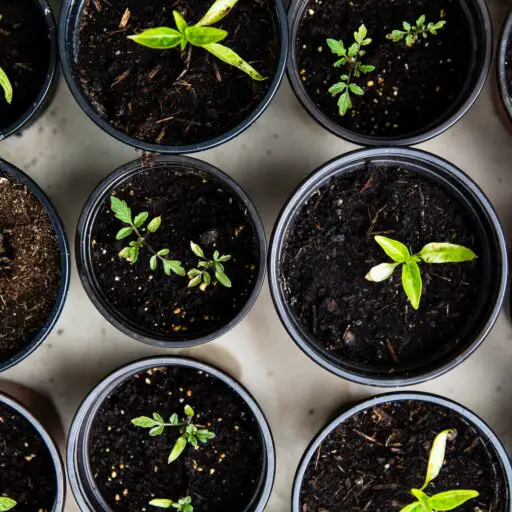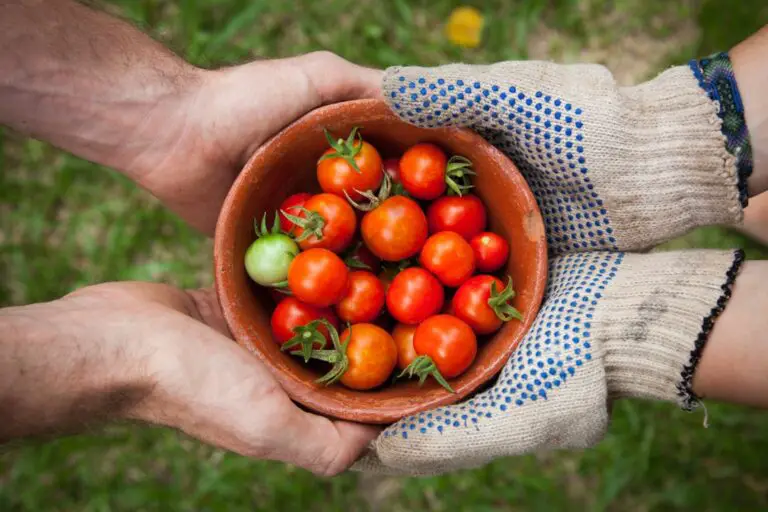Support our educational content for free when you purchase through links on our site. Learn more
Have you ever wondered what goes on in a community garden? Well, you’re in luck! In this article, we’ll take you on a journey through the vibrant world of community gardening. From the history and types of gardens to the challenges and benefits, we’ll cover it all. So grab your gardening gloves and let’s dig in!
Table of Contents
- Quick Answer
- Quick Tips and Facts
- Background: The Evolution of Community Gardens
- Types of Community Gardens
- Plot Size and Location
- Plant Choice and Physical Layout
- Group and Leadership Selection
- Membership Fees
- Challenges of Community Gardens
- Benefits of Community Gardens
- FAQ
- Conclusion
- Recommended Links
- Reference Links
Quick Answer
In a community garden, a group of people comes together to cultivate a piece of land, either individually or collectively. These gardens have a rich history and have experienced waves of development throughout the years. They provide fresh produce, foster a sense of community, and offer opportunities for exercise and neighborhood improvement. Membership fees are usually required to cover maintenance costs, and community gardens have positive health effects. Now, let’s dive deeper into the world of community gardening!
👉 CHECK PRICE on: Gardening Tools | Seeds | Planters
Quick Tips and Facts
- Community gardens are pieces of land gardened by a group of people.
- The land can be divided into individual plots or remain collective.
- Community gardens have experienced waves of development throughout history.
- They contribute to the urban agriculture movement and have seen a global resurgence.
- Membership fees are usually required to cover maintenance costs.
- Community gardens have positive health effects, such as improving nutrition and increasing fruit and vegetable consumption.
Background: The Evolution of Community Gardens

Community gardens have a fascinating history that spans centuries. They have evolved alongside societal changes and have experienced waves of development. Let’s take a closer look at their evolution.
The Early Waves of Community Gardens
The first wave of community gardens coincided with the industrial revolution and rapid urbanization in Europe and North America. As people moved from rural areas to cities, they sought ways to reconnect with nature and grow their own food. These early community gardens provided a sense of self-sufficiency and respite from the bustling city life.
The second wave of community gardens occurred during World War I and World War II. Known as “Liberty Gardens” and “Victory Gardens,” these gardens played a crucial role in supporting the war effort by providing fresh produce to supplement rationed food supplies. They also boosted morale and brought communities together during challenging times.
The most recent wave of community gardens happened in the 1970s during the OPEC crisis. Rising fuel prices and concerns about food security led to a renewed interest in community gardening. People began to recognize the environmental and health benefits of growing their own food, and community gardens became a symbol of resilience and sustainability.
The Resurgence of Community Gardens
In recent years, community gardens have experienced a global resurgence. They have become a vital part of the urban agriculture movement, which aims to promote sustainable food production in cities. Community gardens provide fresh, locally grown produce, foster a sense of community, and reconnect people with the environment.
The resurgence of community gardens can be attributed to various factors, including ecological awareness, climate change concerns, and health crises. As people become more conscious of the impact of industrial agriculture on the environment and their health, they are turning to community gardens as a sustainable and healthy alternative.
Types of Community Gardens
Community gardens come in various forms, each serving a unique purpose and catering to different needs. Let’s explore the different types of community gardens you might come across.
1. Neighborhood Gardens
Neighborhood gardens are perhaps the most common type of community garden. In these gardens, individuals or families rent individual plots to grow fruits, vegetables, and ornamental plants. Each gardener is responsible for their own plot, allowing for personal creativity and self-expression. Neighborhood gardens create a sense of ownership and pride within the community.
2. Residential Gardens
Residential gardens are shared among residents in apartment communities, assisted living facilities, and affordable housing units. These gardens provide an opportunity for people who don’t have access to private outdoor spaces to connect with nature and grow their own food. Residential gardens promote a sense of community and improve the overall well-being of residents.
3. Institutional Gardens
Institutional gardens are attached to public or private organizations and serve a specific purpose beyond food production. These gardens may be part of schools, hospitals, rehabilitation centers, or job training programs. They offer therapeutic benefits, such as mental and physical rehabilitation, and provide opportunities for skill-building and education.
4. Demonstration Gardens
Demonstration gardens are used for educational and recreational purposes. They serve as learning centers, offering seminars, workshops, and tools for community gardening. Demonstration gardens showcase various gardening techniques, sustainable practices, and innovative design ideas. They inspire and educate both experienced and novice gardeners.
Plot Size and Location
The size and location of community garden plots can vary depending on the region and available land. Let’s explore the factors that influence plot size and the ideal locations for community gardens.
Plot Size
In Britain, community garden plots are measured in square poles, with sizes ranging from 40 square poles to 125 meters square. In the United States, plot sizes can vary significantly. For example, in Maryland, community garden plots typically range from 200 to 625 square feet. In Canada, a common plot size is 20×20 feet.
The size of the plot often depends on the number of gardeners and the available land. Smaller plots are suitable for individuals or families, while larger plots can accommodate community gardens with multiple participants.
Location
Choosing the right location for a community garden is crucial for its success. Ideal locations have good soil quality, access to sunlight, and proximity to water sources. Community gardens can be found in various settings, including neighborhoods, schools, hospitals, and residential housing complexes.
When selecting a location, it’s important to consider the surrounding environment. Avoid areas with contaminated soil or heavy pollution. Conducting soil testing, especially in industrial zones, can help ensure the safety and productivity of the garden.
Plant Choice and Physical Layout
Community gardens primarily focus on food production, but they can also incorporate natural areas, native plant gardens, and art gardens. The choice of plants and the physical layout of the garden play a crucial role in its success. Let’s explore these aspects in more detail.
Plant Choice
When it comes to plant choice, community gardens often prioritize growing fruits, vegetables, and herbs that are well-suited to the local climate and growing conditions. This ensures a bountiful harvest and encourages gardeners to experiment with new varieties.
In addition to food crops, community gardens may include native plants to support local ecosystems and attract pollinators. Some gardens also incorporate medicinal plants or plants with cultural significance to the community.
Physical Layout
Planning the physical layout of a community garden is essential for efficient space use and optimal plant growth. Factors such as garden size, sunlight exposure, and plant types should be taken into consideration.
Garden beds or raised planters are commonly used to organize individual plots. Pathways between plots allow for easy access and maintenance. Community gardens may also include communal areas, such as seating areas or gathering spaces, to foster a sense of community and encourage social interaction.
Group and Leadership Selection
Community gardens are formed by groups of individuals with a shared passion for gardening. The selection of group members and leaders can vary depending on the garden’s organizational model. Let’s explore the different approaches to group and leadership selection.
Group Selection
Community gardeners come from diverse backgrounds and often share a common interest in gardening and sustainable living. Some community gardens are self-supporting, with members contributing through monthly or annual dues. Others may receive sponsorships or grants to cover maintenance costs.
Different organizational models exist within community gardens. In some cases, leaders are elected from within the membership, while in others, leaders are appointed by sponsors or community organizations. The selection process aims to ensure fair representation and effective management of the garden.
Leadership Selection
Leadership roles within community gardens can vary depending on the garden’s structure and goals. Leaders may be responsible for coordinating garden activities, organizing events, and ensuring the smooth operation of the garden. They play a crucial role in fostering a sense of community and facilitating communication among gardeners.
Leaders can be elected by the garden members or appointed by external organizations. Effective leaders possess strong communication and organizational skills, as well as a passion for community gardening.
Membership Fees
Membership fees are a common practice in community gardens to cover various costs related to maintenance and infrastructure. Let’s explore the reasons behind membership fees and how they contribute to the sustainability of community gardens.
Community gardens require ongoing maintenance, including watering, soil amendments, and infrastructure upkeep. Membership fees help cover these costs, ensuring the long-term viability of the garden. The fees may also be used to provide essential tools, such as shovels, rakes, and watering cans, for the gardeners to use.
The amount of the membership fee can vary depending on the garden’s size, location, and the services provided. Some gardens offer reduced fees for low-income individuals or families to ensure inclusivity and accessibility.
Challenges of Community Gardens
While community gardens offer numerous benefits, they also come with their fair share of challenges. Let’s explore some of the common challenges faced by community gardeners.
Land Availability
Finding suitable land for a community garden can be a significant challenge, especially in urban areas where space is limited. Securing land that meets the necessary criteria, such as good soil quality and access to sunlight, can be a time-consuming and complex process.
Maintenance and Upkeep
Maintaining a community garden requires ongoing effort and commitment from the gardeners. Tasks such as watering, weeding, and pest control must be regularly attended to. Ensuring that all gardeners contribute their fair share of work can be a challenge, as people have different schedules and levels of commitment.
Community Engagement
Building a strong sense of community and fostering active participation can be challenging in community gardens. Some gardeners may be more engaged than others, leading to disparities in the distribution of work and responsibilities. Encouraging open communication and organizing community events can help overcome these challenges.
External Factors
Community gardens are vulnerable to external factors such as weather conditions, pests, and vandalism. Unpredictable weather patterns, such as droughts or heavy rains, can impact crop yields. Pests, such as insects or rodents, can damage plants and require proactive pest management strategies. Vandalism can also pose a threat to the garden’s infrastructure and overall well-being.
Benefits of Community Gardens
Despite the challenges, community gardens offer a wide range of benefits to individuals and communities. Let’s explore some of the key benefits of community gardening.
Fresh Produce
One of the primary benefits of community gardens is the access to fresh, locally grown produce. Gardeners can enjoy the taste and nutritional benefits of homegrown fruits, vegetables, and herbs. Community gardens contribute to food security by providing an additional source of fresh produce for individuals and families.
Sense of Community
Community gardens foster a sense of community and belonging. Gardeners have the opportunity to connect with like-minded individuals, share gardening knowledge, and form lasting friendships. The shared experience of tending to the garden creates a sense of camaraderie and support.
Connection to the Environment
Community gardens provide a unique opportunity to connect with the environment and learn about sustainable gardening practices. Gardeners gain a deeper understanding of the natural world and the importance of preserving it. Community gardens often incorporate eco-friendly practices, such as composting and water conservation, further promoting environmental stewardship.
Exercise and Well-being
Gardening is a physical activity that offers numerous health benefits. Spending time in the garden provides opportunities for exercise, stress relief, and relaxation. Gardening has been shown to improve mental well-being, reduce anxiety and depression, and increase overall life satisfaction.
Neighborhood Improvement
Community gardens have a positive impact on the overall aesthetics and livability of neighborhoods. They transform vacant lots or underutilized spaces into vibrant green spaces. Community gardens can also contribute to urban revitalization efforts, attracting visitors and promoting economic development in the surrounding area.
FAQ

How does community gardening work?
Community gardening involves a group of people coming together to cultivate a piece of land. The land can be divided into individual plots, where each gardener is responsible for their own plot, or it can remain collective, with the harvest belonging to all participants. Gardeners contribute their time, skills, and resources to maintain the garden and share in the rewards of their collective efforts.
Read more about “How Much Does It Cost to Start a Small Garden in 2024? 🌱”
What goes in a community garden?
Community gardens typically include a variety of fruits, vegetables, herbs, and sometimes flowers. The specific plants grown in a community garden depend on the preferences of the gardeners and the local climate. Some gardens may also incorporate native plants, medicinal plants, or plants with cultural significance to the community.
Read more about “Environmental Benefits of Community Gardens … 🌿”
What are the challenges of a community garden?
Community gardens face challenges such as finding suitable land, maintaining the garden, fostering community engagement, and dealing with external factors like weather and pests. Land availability can be limited in urban areas, and maintaining the garden requires ongoing effort from all gardeners. Building a strong sense of community and overcoming disparities in participation can also be challenging. Additionally, external factors like weather conditions, pests, and vandalism can impact the garden’s success.
Read more about “Do Community Gardens Reduce Crime? … 🌱🔒”
Do community gardens bring people together?
Yes, community gardens have a remarkable ability to bring people together. They provide a shared space where individuals from diverse backgrounds can connect, share knowledge, and form lasting friendships. Community gardens foster a sense of belonging and create opportunities for social interaction and collaboration. The shared experience of gardening creates a strong bond among participants and strengthens the fabric of the community.
Read more about “Why Community Gardens are Beneficial? … 🌱”
Conclusion

Community gardens are vibrant spaces where people come together to cultivate the land, grow fresh produce, and foster a sense of community. They have a rich history and have experienced waves of development throughout the years. Community gardens provide numerous benefits, including access to fresh produce, a sense of community, connection to the environment, and opportunities for exercise and neighborhood improvement.
While community gardens come with their fair share of challenges, such as land availability and maintenance, the rewards far outweigh the difficulties. The positive impact of community gardens on individuals and communities is undeniable. So why not join a community garden near you and experience the joy of growing together?
👉 CHECK PRICE on: Gardening Tools | Seeds | Planters
Recommended Links
- Benefits of Community Gardens
- Community Garden Events
- Community Garden Policies
- Therapeutic Benefits of Gardening
- Garden Design Ideas
- 20 Ways to Help Your Community Garden Thrive




